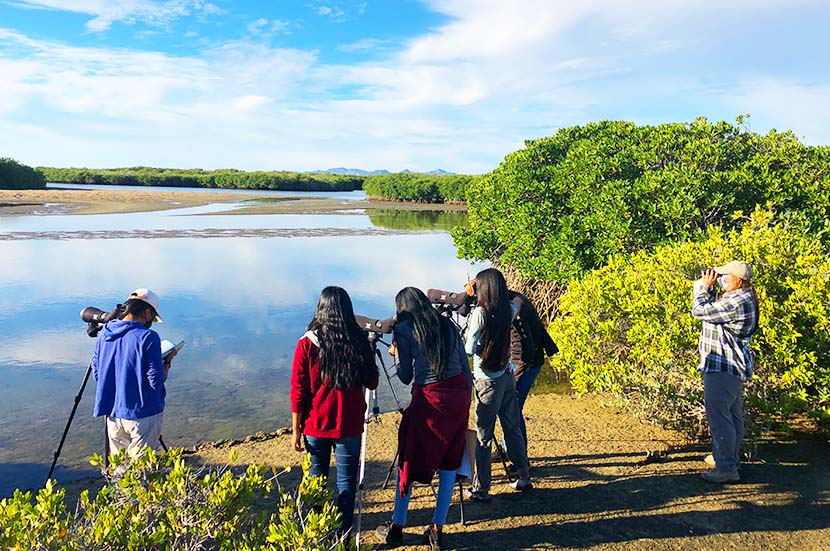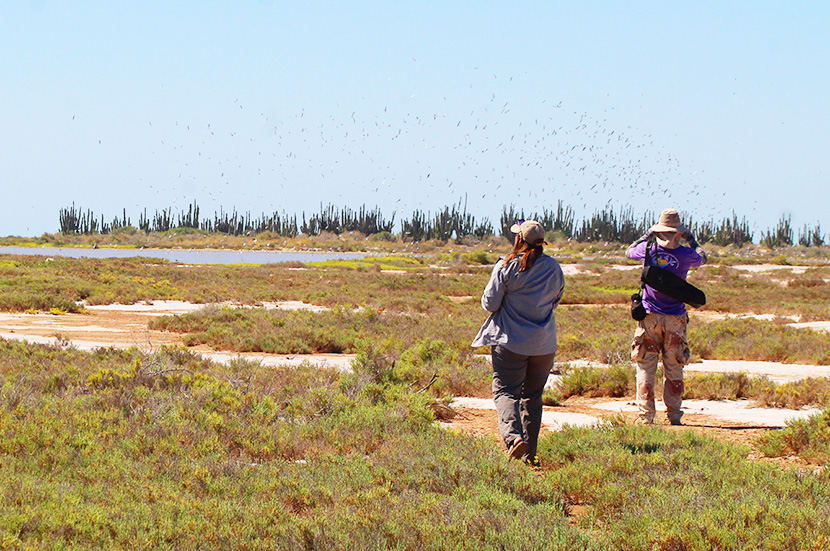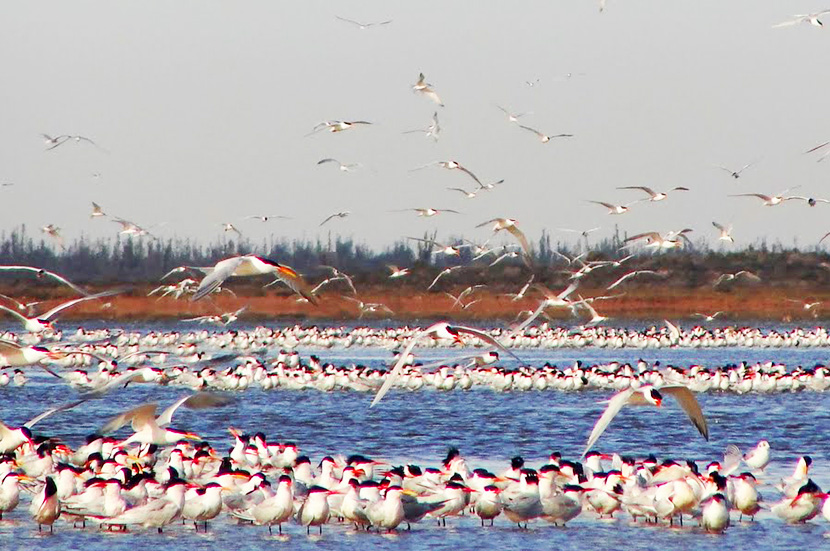Waterbird Monitoring
Waterbird Monitoring
Increasing scientific knowledge and informing conservation efforts
What We Do
The island and estuarine ecosystems of the Midriff Island Region of the Gulf of California are very diverse and productive. Many species of waterbirds use coastal and marine habitats in this region for nesting, wintering, feeding, resting, and as year-round habitat. Prescott College faculty and students began monitoring regional waterbird populations in 1997. Since then, the Center has expanded its monitoring program to include three coastal estuaries, two islands and the Canal del Infiernillo. The Waterbird Monitoring Program (WMP) records nesting activity and productivity, diversity and abundance of migrants, and general species richness and abundance of birds using regional estuaries throughout the year, including populations of threatened and endangered species. The WMP studies have resulted in 11 peer-reviewed articles and contributed to the designation of Laguna La Cruz as a Wetland of International Importance (United Nations Ramsar Site) and the declaration of Laguna la Cruz and Cardonal as Important Bird Areas (IBAs) by Bird Life International. The WMP staff mentor Prescott College students and local community members, and accompany many of the educational field trips offered through the Center. Click below to learn more about the WMP activities and results.




